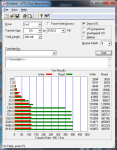Moriath
I am a FH squatter
- Joined
- Dec 23, 2003
- Messages
- 16,209
I want to build a machine that will be linux
4 or so drive spaces
i3 processor
8 GB at least maybe 16
64GB SSD for OS drive
Low power
24/7 server
WAnt to make it headless stick it in a corner admin it from my pc and run minecraft and other game servers and some backup storage.
Anyone got suggestions as to hardware for this
cheers
4 or so drive spaces
i3 processor
8 GB at least maybe 16
64GB SSD for OS drive
Low power
24/7 server
WAnt to make it headless stick it in a corner admin it from my pc and run minecraft and other game servers and some backup storage.
Anyone got suggestions as to hardware for this
cheers

